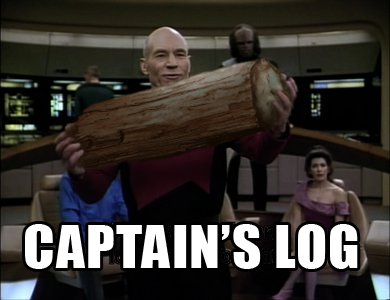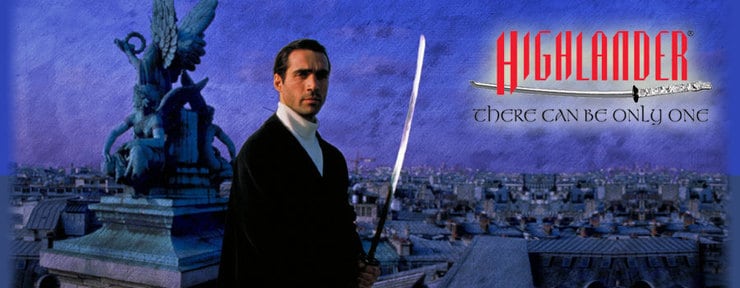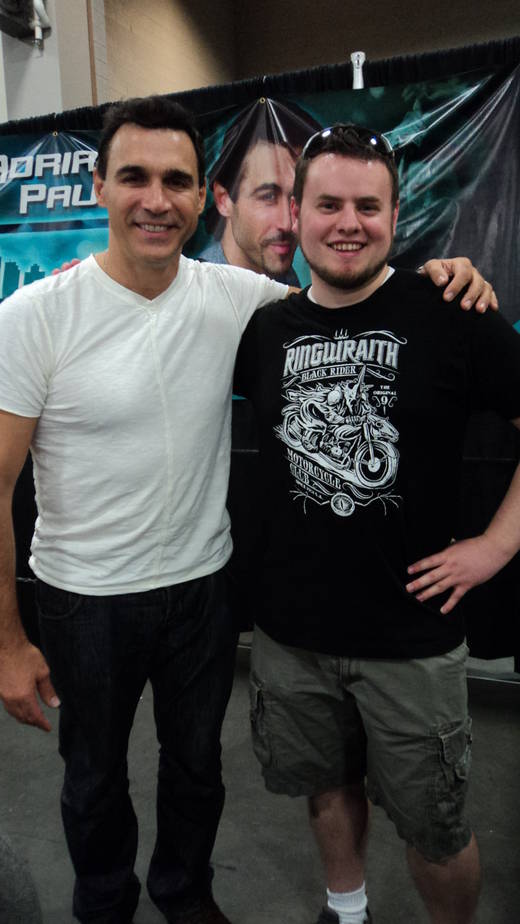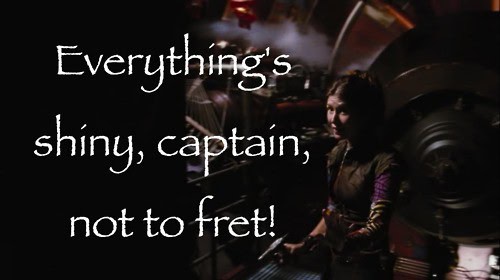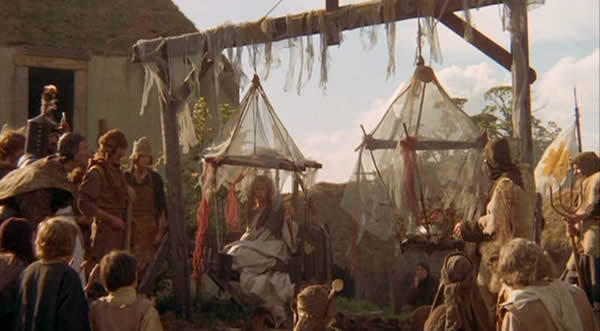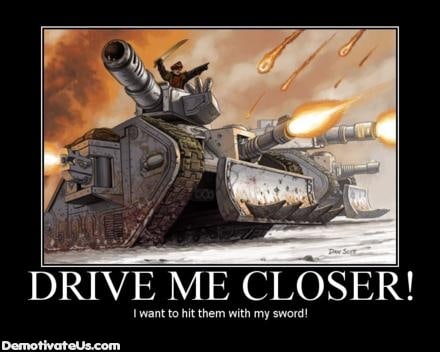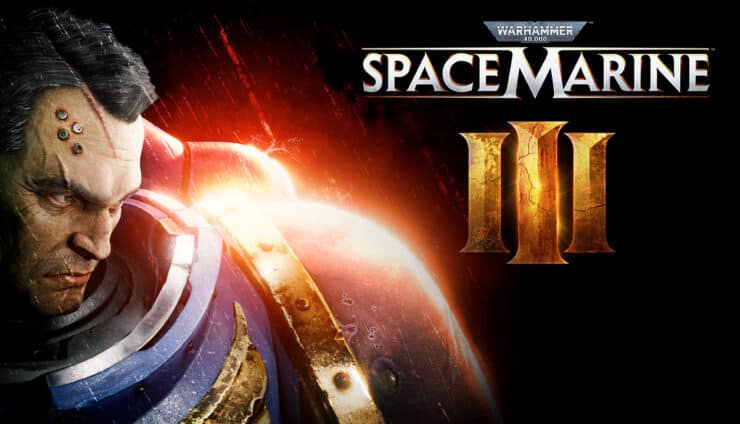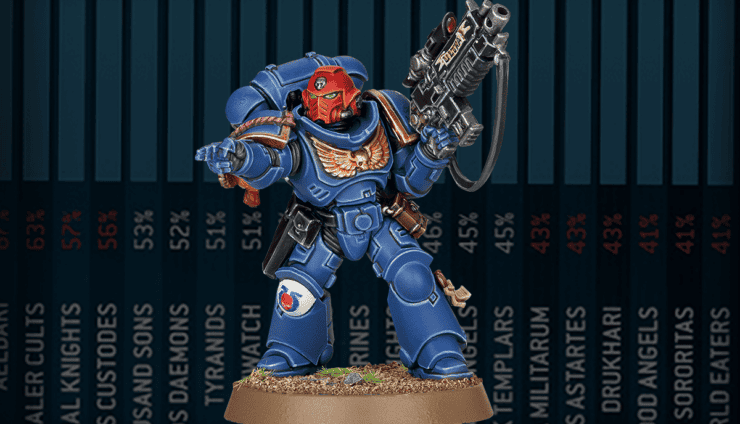Hello everyone and welcome to another log entry on the state of 40k.
Today I would like to take a minute and talk about a topic that’s become fairly prevalent in the last couple months both online and recently within my own gaming community. I speak to you of Highlander (unfortunately not the Scottish-accented variety) and the effect that this is having on the Warhammer 40,000 game.
Let me preface the article by saying this: 40k is an always will be about how to play your way. I am not out here to cut the hobby head off (ha) of the Highlander format at all, but rather to explore the goods and bads of the Highlander playstyle as a whole.
For those who don’t know, Highlander is a format that puts a limitation on the number of a certain squad you can take. Using the quote from the movie we know and love, “There can be only one,” take that and apply it to your force organization chart, turning each unit that fills a FOC slot into a “unique” unit. Do you have a shooty terminator squad in your list? Great, but don’t take any other terminators, assault or otherwise. Have 3 different loadouts on your predators? Be prepared to pick a favorite and shelf the others. The only exception is (generally) that you can repeat your troops choices, but ONLY after having cycled through all available options first. Dedicated transports are also considered unique, so one drop pod, one trukk, one devilfish, etc. per army. This is the basics, and some apply exceptions or nuanced differences, but the premise is the same; No Spamming!
With that out the the way, I have to say that overall I am not a fan of this playstyle, and let me tell you a few reasons why.
1. Highlander playstyle limits player creativity.
One of the best hings about playing 7th Edition 40k is the immense and utter freedom that the rule set gives players when it comes to building army lists. 6th Edition 40k pioneered some of this change as it introduced things like the allies chart, double force org, and then later with the Inquisition codex supplement. From a competetive standpoint, this shook the game to it’s core. From a narrative or fluff standpoint, it only provided some additional structure to those who were already bending the rules to play the story they were trying to tell. This would prove to only be the beginning, as more and more change came (formations, dataslates, etc.) and then 7th edition dropped and suddenly the word “unbound” was entered into Urban Dictionary as “the foulest curse that a gamer can conceive of and something that must be killed with fire” (citation needed… but you get the point). All of the sudden, we were given a game system that offered freedom to those who wanted it and rewarded the rest with benefits (obsec, anyone?) for staying within the conventional norm. It didn’t stop there, as new detachments, dataslates, formations, and command benefits have popped up as the new, shiny codices have been released.
At this point you’re saying “Yes, Captain! We know this already, get to the point!” (unless you are a new player, in which case, I say WELCOME! Bring friends!). So here’s my point: Highlander takes all of that freedom that the game has given you, and strips it away. Not just at the allies or unbound level, but at the codex level that we’ve loved and enjoyed since codices became a thing. It does this with the promise of variety in list building and a better overall game balance (I’ll address that last one in a minute), but no matter how you spin it, it limits your ability to be creative, to come up with combos, to explore the effectiveness of units, and to build/play your army your way. I feel that goes against the spirit of the game.
Granted, some players may want to build and keep their armies that way, and to them I say good for you, more power to you. There’s nothing wrong with that if that’s the way that you have fun and want to play the game. Unfortunately for some players (myself included) this means that I don’t get to play with my plastic soldier dudes the way I want to. This means that most of the formations that I have the option to play in my codex, or my codex/campaign supplements (which cost plenty of dollars to access legitimately), cannot be used unless they follow that same “there can be only one” qualifier, and forces list building to gravitate towards a much narrower interpretation of what make an effective army (if they allow you to build outside of a CAD in the first place-but that’s another beast to slay).
Mathhammer works just as well in Highlander as in any other playstyle, and only creates a more narrow vision of the most points-effective and utility driven builds are for armies. For those who buy and build armies based off of their fluff or effectiveness (the tournament player seeking the perfect build, or that fluffy player who built his army for a campaign or to match the vision in one of the books) this also incurs additional expense as they have to buy or borrow new units in order to allow them to participate. Some of us older players may not have this issue, but not everyone is fortunate enough to have a collection big enough to allow for that sort of easy format swapping.
Ultimately, Highlander creates a very narrow vision of that 40k has to offer, both narratively and competitively when it comes to list building. “But Captain!” you say, “Think of the balance!” Oh, the balance has been thought of, my compatriots, and that is what I would like to talk about next.
2. Highlander alienates (I’m talking to you, xenos!) certain armies from performing well because of the way an army is built, and rewards other armies for the same reason.
Probably my biggest dislike about the Highlander playstyle is how it handicaps some armies and drastically buffs others. Lets take a look at a couple of examples:
ALIENATED! – ORKS
Orks are an army that rely on repetition to get the job done, but if you bring Orks to Highlander be ready to have a hard time. First off, if you run Trukkboyz, be prepared to run Runboyz, since only one squad of boyz can take a trukk. This alone is enough to cripple the Orks, as their boys are forced to footslog across the board in order to get in contact with the enemy, plus if you want two squads of boyz, be ready to take some grots so you can get there. I haven’t heard of a unit that can’t handle a squad of grots and a runtherd… maybe rippers? Functionally this is not sound for the Orks, and fluff-wise it doesn’t make a whole lot of sense either. Luckily this is partially redeemed in the sense that you can field a squad of 30 boys in one slot. It won’t matter though if your opponent has a single thunderfire cannon. But what are the chances of that, eh?
BUFFED! Astra Miliguard
For the IG, things just got very very good. Highlander limits the FOC so a unit taking that slot is considered unique, but that isn’t to say that you can’t repeat units into that slot if it isn’t already built-in. I’m looking at you, wyverns! That’s not limited to them though. How many IG slots can be filled with units that are repetitive and effective? I’ll let you mull that over for a minute. This codex thrives in Highlander, because the very nature of the dex breaks the idea of a highlander format like a Tau pathfinder in Yarrick’s claw. If you have a highlander event that does not place any additional limitations on your format, then you are living the high life of every guardsman’s dream to fight better than Astartes.
For this reason I have seen FAQ’s and special rulings for IG that go on for pages dictating what is allowed and not allowed. It’s like a whole new codex telling you how you can build your army, and the IG list has enough trouble getting its head together on how it’s organized on it’s own without adding to the complication with a detailed FAQ. Heck, if I didn’t have access to an app that does list building for me, I would probably have looked at the codex once and dropped the book for all time (all of you old guard players have my infinite respect). It is, as I have said, a FAQ’d up way of building a list. As a TO, do you want to spend all of your time on FAQ’s? As a player, do you want to memorize ANOTHER event FAQ? I guess it’s up to you.
ALIENATED! – Dark Eldar
If you want to put the pain on pointy-eared evil space elves, then invite them to a Highlander event. Call it planet McLeod. This army practically invented the idea of the repetitive dedicated transport (a side effect of having your transport break if your enemy sneezes at it), and unlike the Orks they don’t have the option to build squads of 30 dudes to try and footslog across the table. Repetition is key to this army’s effectiveness on the table, because that was how this army was written to play. I have never fought a Dark Eldar army that didn’t have at least 2 or 3 Raiders, Venoms, or Ravagers. This is the bread and butter of this army, and against armies like IG with built-in repetitive potential, or Tyranids that have large unit sizes or Tervigons to produce reinforcements/additional units in-game, they will and do struggle to make a big dent.
I think those three examples do a good job of making my point. I will say this, avoiding repetition eliminates the omni-present and much cursed “Wave Serpent Spam” that plagues certain areas of the community. There is a balance that is brought by saying “No, you can’t field three Riptides!” and “One grav command squad for you!” which is something I don’t feel is bad for the hobby, but lets not pretend that Highlander does anything else but create a new “balance” that comes at the cost of alienating certain players and reducing the variety of races we see on the table. It’s not like it takes Craftworld Eldar off the table at all, either. That book is just full of good stuff that you can’t get rid of. Not only that, it denies people the tools they need to deal with the big problem units like Knight Titans that require a much more creative approach to killing than your conventional tank.
3. It over-complicates the game
I’ve made a brief point of this already in the IG section, but Higlander adds another layer of complexity to the rules by inventing a set of rules that doesn’t exist in the book. As someone who wrote a 25 page campaign system for a map with moving pieces etc., I can tell you that writing a ruleset is hard stuff, and you can’t ever make everyone happy. I am a listener to many a 40k podcast, and I can tell you that every time Highlander is brought up, it takes a few minutes for the hosts to explain what they’re talking about (or at least until they say “I’ve said this too much, go back to another episode and listen because I’m tired of explaining this over and over.”). The same is true for every person that has to get the explanation, and not everybody gets it right the first time. Between the private messaging, the extensive FAQ’s, and simple human error, anyone who is running a Highlander event has a tough job. All of you out there that have done it and had it go well, kudos to you! 40k is a complex game, and for a GT where you have 100’s of players coming in to play and spending dollars (or “insert appropriate currency here”), a uniform system of ruling and FAQ’s are a must. For a local tournament, you are increasing the amount of work that you have to do when you put on one of these events, and additional complexity can have the side effect of driving off people who are new or impatient. The FAQ for demon summoning made my head hurt.
“But Captain!” you say, “Have you even tried it?” to which I respond: Yes, and I had a good time. What? I didn’t say it couldn’t be fun, did I?
I want to be fair, because I have the utmost respect for players who are seeking to help create an open, fair, and balanced way to play 40k. I hope that whoever invented Highlander understands how much I feel like that is a good thing for the hobby , because they must feel like I hate them, but really I don’t. Props to anyone who’s willing to take that brave step and plant a flag on that bolt-ridden hill and say “Let’s try it this way!” This community thrives off of creativity, so everything deserves a shot so far as I’m concerned, and while I may not always agree with the direction we are going, I am grateful that at least we are trying to go somewhere at all.
I had a great game with an Eldar opponent in my Highlander game this week. He was a solid player, a good sportsman, and was tactical and fluffy in his Siam Hann list build that was still full of tough units to deal with. I won’t go into too much detail because I’d like to do him the courtesy of a full battle report, but as far as this article is concerned I had a good experience playing a game of Highlander. With the 2nd consecutive Highlander Tournament looming this weekend (which for family reasons I will no longer be able to attend) I felt it appropriate to give it a shot before I decided not to go. Here’s a quick shot of a cool moment from the game:
Captain’s Conclusion
While Highlander is rife with as many problems as standard 40k and adds a new dimension of complexity and expense for list and army building, it is still a fun way to play the game. Make no mistake, Highlander is not the end-all-be-all of balanced 40k, but the ability to have a variety of gaming methods and playstyles is good for the game and good for the community in general. In that respect, there CAN be more than one way to play, so find the right one for you, or if you’re brave enough you can make one up yourself. If you do, send me a missive and I’ll give it a fair shot.
